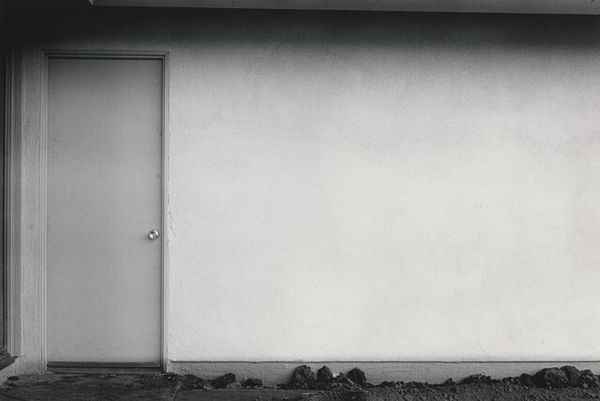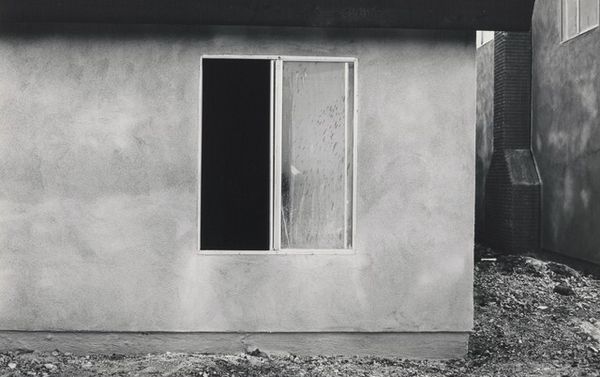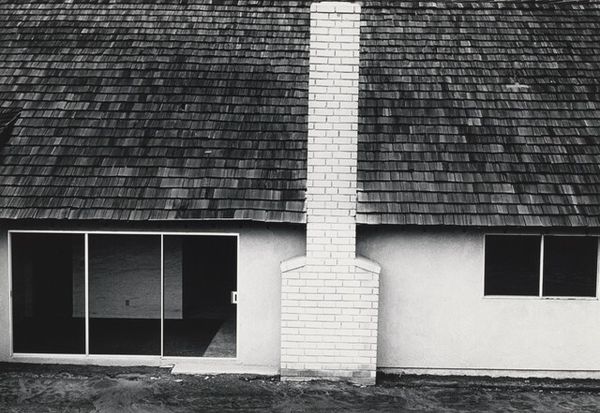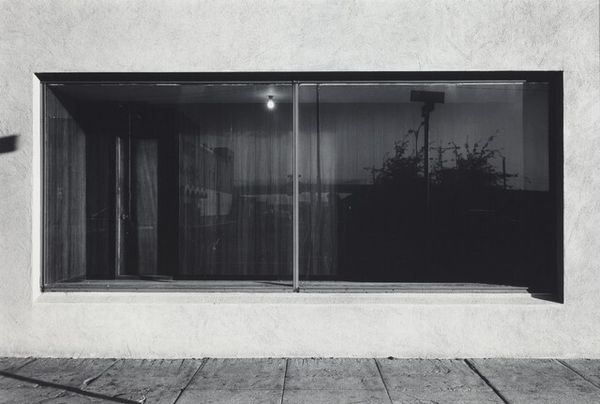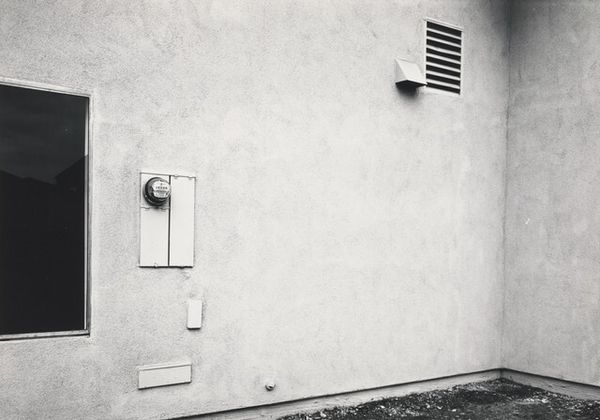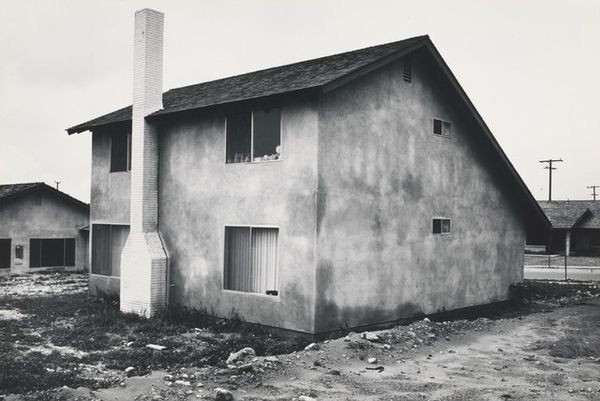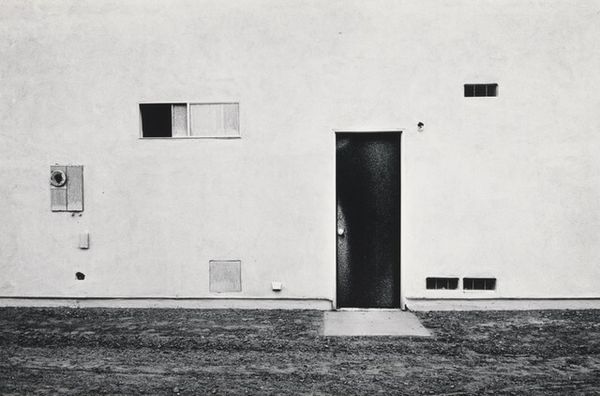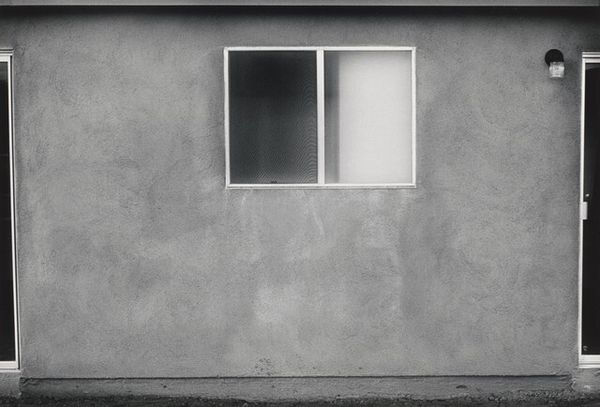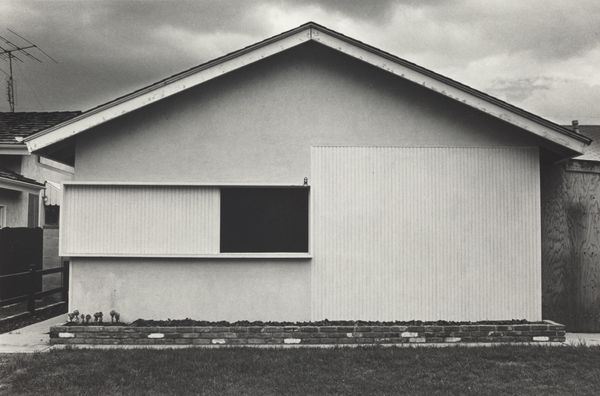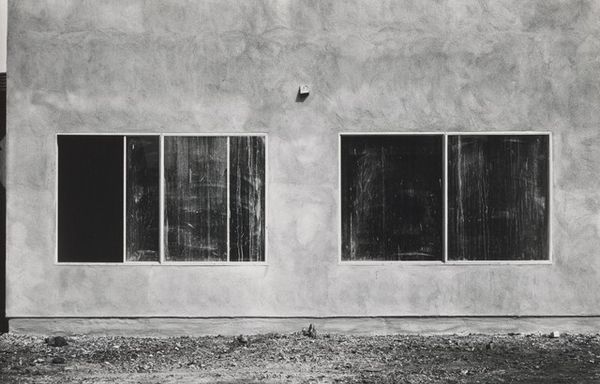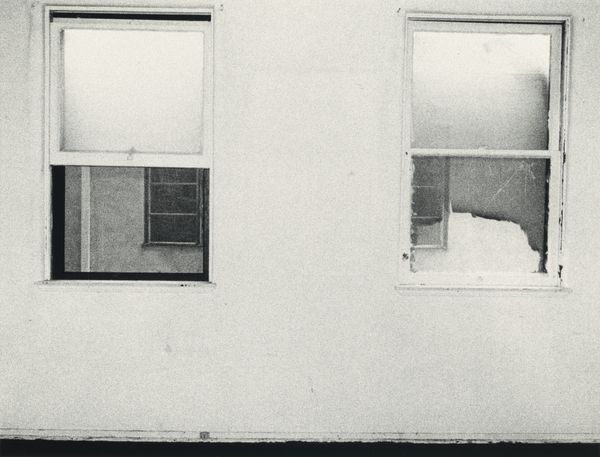
photography
#
photorealism
#
conceptual-art
#
black and white photography
#
minimalism
#
landscape
#
photography
#
black and white
#
monochrome photography
#
cityscape
#
monochrome
#
monochrome
Dimensions: image/sheet: 14 × 21 cm (5 1/2 × 8 1/4 in.) mount: 27.94 × 27.94 cm (11 × 11 in.)
Copyright: National Gallery of Art: CC0 1.0
Editor: So, here we have Lewis Baltz’s "Tract House #11," a gelatin silver print from 1971. It’s strikingly austere. The stark black and white, the unadorned architecture... it feels almost confrontational in its plainness. What do you see in this piece? Curator: I see a meditation on the psychology of place, a ghost in the machine of modern living. Notice how Baltz flattens the perspective, almost denying depth. The house becomes a sign, an ideogram representing something larger than itself. The window, dark and impenetrable, serves as a vacant stare. Do you sense how the architectural elements - the roofline, the wall, the window - function almost as abstract symbols, charged with latent meaning? Editor: Yes, definitely. The window is particularly interesting...like a void. But what meaning is loaded into such a blank symbol? Curator: Perhaps a critique of the utopian promise of suburbia? Think of the 1970s. Mass-produced housing developments were popping up everywhere, promising an idealized version of the American Dream. Yet, Baltz gives us a feeling of isolation, conformity, and perhaps even the repression of individual expression. The repeated geometric forms speaks to standardization; does it liberate, or confine? The barren landscape reinforces this sense of alienation, reflecting our own cultural anxiety about a rapidly changing world. It almost reads as a hieroglyph of suburban ennui. Editor: That makes sense. So the symbols, simple as they are, point to something more complex than just a house. It's like a code to decipher the mood of a time. I never thought of suburban landscapes having so much cultural weight. Curator: Indeed. And understanding that weight is key to decoding the symbolism Baltz presents. The apparent banality is, in fact, a potent carrier of cultural memory.
Comments
No comments
Be the first to comment and join the conversation on the ultimate creative platform.
